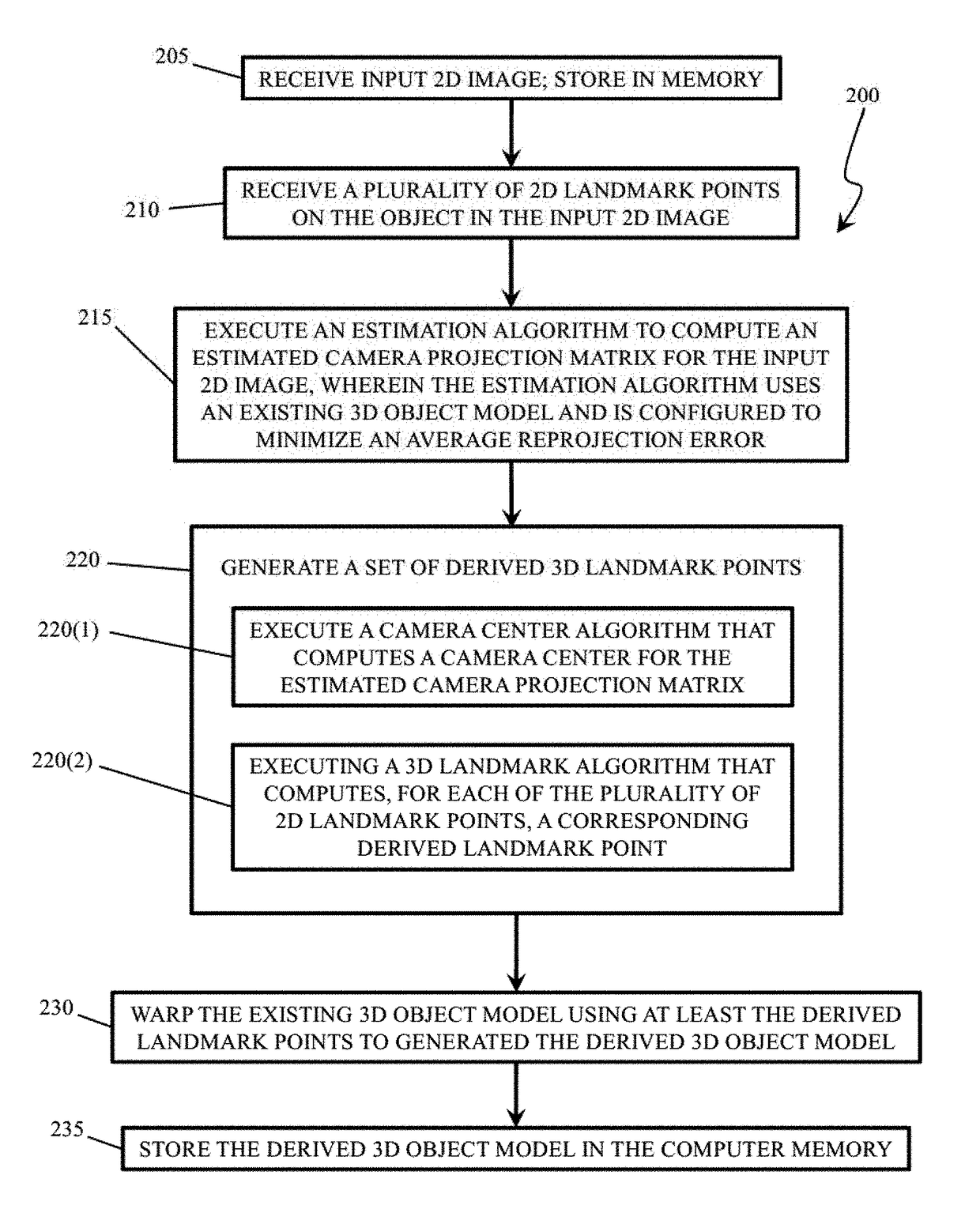Methods and Software for Generating a Derived 3D Object Model From a Single 2D Image
a technology of 3d object model and 2d image, which is applied in the field of computer reconstruction, can solve the problems of reducing the possible 3d objects that could be seen when looking at the 2d image, affecting and reducing the performance of systems that rely on aligned
- Summary
- Abstract
- Description
- Claims
- Application Information
AI Technical Summary
Benefits of technology
Problems solved by technology
Method used
Image
Examples
Embodiment Construction
[0022]I. General Introduction
[0023]In some aspects, the present invention is directed to methods of generating a 3D model of an object using a single 2D image of the object as the basis for constructing the 3D object model. Since the 3D model is derived from the 2D image, the model is referred to herein and in the appended claims as a “derived 3D object model.” The process of generating such a derived 3D object model is referred to herein as “reconstruction,” as the derived 3D object model is essentially reconstructed from the object as depicted in 2D in the input 2D image. As those skilled in the art will readily appreciate, methods of the present disclosure can be used for any of many types of objects having a generic 3D form that can be augmented with landscape points that can be used to relate the generic model of an object to a specific instance of the object depicted in the 2D image. Examples of objects for which derived 3D models can be reconstructed include, but are not limi...
PUM
 Login to View More
Login to View More Abstract
Description
Claims
Application Information
 Login to View More
Login to View More - R&D
- Intellectual Property
- Life Sciences
- Materials
- Tech Scout
- Unparalleled Data Quality
- Higher Quality Content
- 60% Fewer Hallucinations
Browse by: Latest US Patents, China's latest patents, Technical Efficacy Thesaurus, Application Domain, Technology Topic, Popular Technical Reports.
© 2025 PatSnap. All rights reserved.Legal|Privacy policy|Modern Slavery Act Transparency Statement|Sitemap|About US| Contact US: help@patsnap.com



